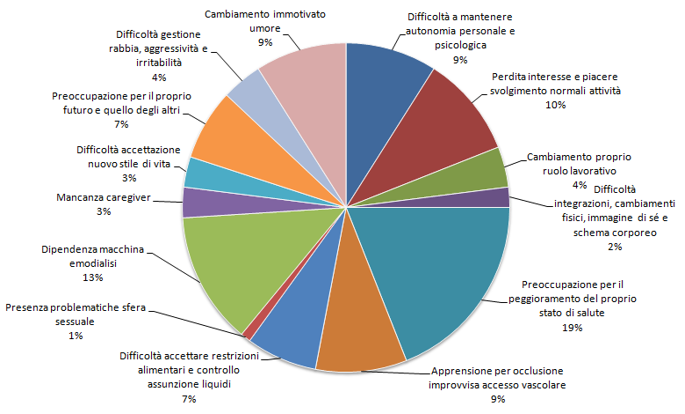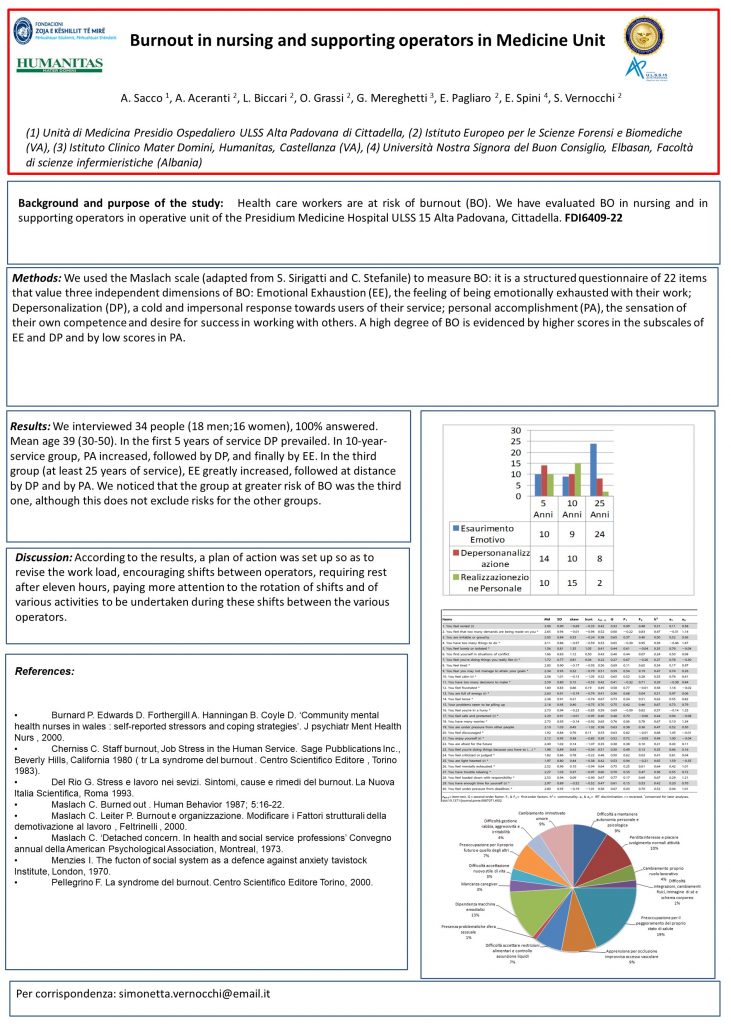BurnOut is generally defined as a syndrome of emotional exhaustion, of
personal depersonalization and derealization, which can manifest itself in all
those professions with very pronounced relational implications. Generally it
arises from a deterioration that affects the values, dignity, spirit and will
of the people affected. It is a disease in constant and gradual increase among
workers in westernized advanced technology countries, this does not mean that
something is no longer working in people, but that there have been substantial
and significant changes both in the workplace and in the way in which one
works.
Background and purpose of the study: Health care workers are at risk of burnout
(BO). We have evaluated BO in nursing and in supporting operators in operative
unit of the Presidium Medicine Hospital ULSS 15 Alta Padovana, Cittadella.
Methods: We used the Maslach scale (adapted from S. Sirigatti
and C. Stefanile) to measure BO: it is a structured questionnaire of 22 items
that value three independent dimensions of BO: Emotional Exhaustion (EE), the
feeling of being emotionally exhausted with their work; Depersonalization (DP),
a cold and impersonal response towards users of their service; personal
accomplishment (PA), the sensation of their own competence and desire for
success in working with others. A high degree of BO is evidenced by higher
scores in the subscales of EE and DP and by low scores in PA.
Results: We interviewed 34 people (18 men;16 women), 100%
answered. Mean age 39 (30-50). In the first 5 years of service DP prevailed. In
10-year-service group, PA increased, followed by DP, and finally by EE. In the
third group (at least 25 years of service), EE greatly increased, followed at
distance by DP and by PA. We noticed that the group at greater risk of BO was
the third one, although this does not exclude risks for the other groups.
Discussion: According to the results, a plan of action was set up
so as to revise the work load, encouraging shifts between operators, requiring
rest after eleven hours, paying more attention to the rotation of shifts and of
various activities to be undertaken during these shifts between the various
operators.

Authors: A. Sacco, A. Aceranti, L. Biccari, O. Grassi, G. Mereghetti, E. Pagliaro, E. Spini, S. Vernocchi
Published: Italian Journal of Medicine 2016
Presented: Poster FDI6409-22 at the FADOI National Congress of Medicine 2016


